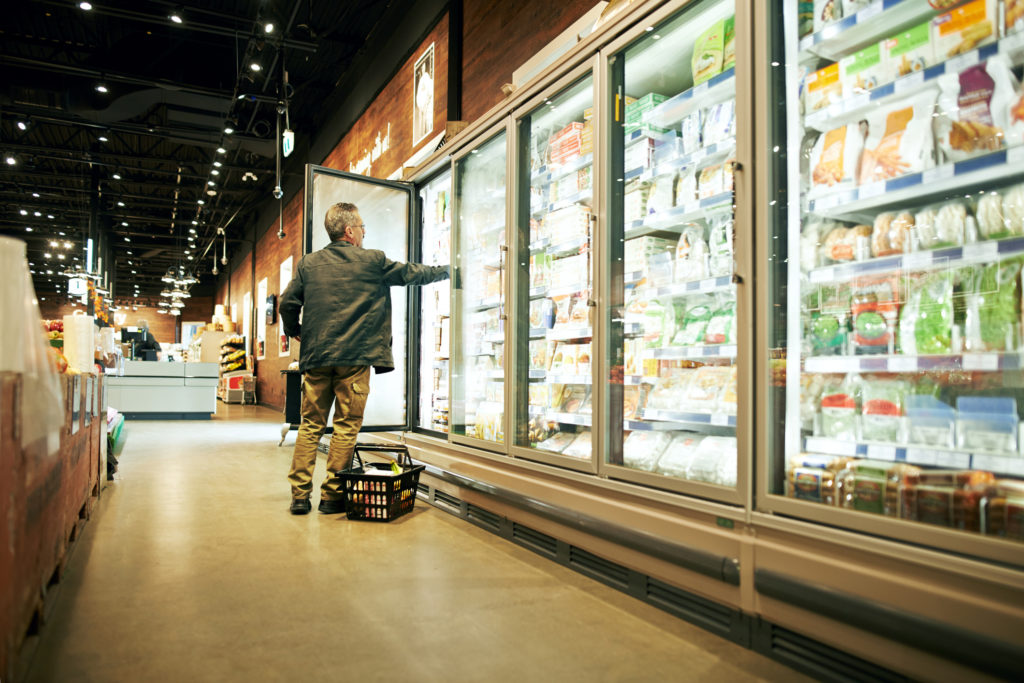Grocery stores and supermarkets work on very slim profit margins, so reducing operating costs can go a long way toward increasing the bottom line. With water rates continuing to rise dramatically, food retailers who use large amounts of water can cut their utility bills significantly by lowering their water use through conservation and efficiency. Since much of the water used by supermarkets for sanitary purposes must be heated, using water more efficiently has the added benefit of reducing energy bills in the process. Here are just a few ways grocery stores can recognize reduced operating costs:
- Refrigerated and frozen food display cases and areas are responsible for about half the water consumption of a typical supermarket – up to 1.5 million gallons a year – thanks to their evaporative condensers. With that amount of water use, proper maintenance is essential to keeping the condensers operating as efficiently as possible. This includes setting controls to regulate the rate at which old water is drained from the system and replaced with fresh water (a process known as “bleeding”) and preventing the build-up of minerals that can create scale on condenser coils and reduce their efficiency.
- Restrooms can account for up to 17 percent of a supermarket’s water use (and even more if careless customers and employees leave faucets running). Install faucets with motion sensors that limit water flow to half a gallon per minute when the sensors detect that someone is washing their hands, high-efficiency toilets that use 1.3 gallons per flush and urinals that use one gallon per flush.
- Many supermarkets are turning to iceless seafood display cases to replace traditional cases that feature a bed of ice. An iceless seafood case can save more than 100,000 gallons of water a year and about $800 in water and energy costs.
- In kitchen areas where food is prepared, low-flow pre-rinse spray valves can save water and money. These devices remove food particles from dishes, pots and pans prior to full dishwashing, but older models use as much as three gallons per minute to do the same job as low-flow valves can do with half the flow rate.
- Educate employees on the importance of saving water and the actions they can take as part of their jobs. Store operators can enlist an army of leak spotters and drip stoppers that are just as important to the conservation effort as any piece of equipment.
There are other attainable no-cost and low-cost energy upgrades store owners can employ to ease their operational costs.
